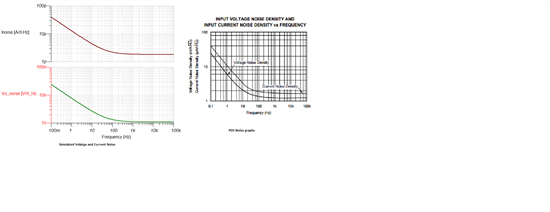Is it the Texas Instrument standard for noise and current noise density graphs to reflect a differential model where the noise is relative to both inputs? If so, then the numbers would need to be multiplied by root 2 to get single ended (i.e. relative to non-inverting input) noise. That seems to be closer to SPICE noise sims.
-
Ask a related question
What is a related question?A related question is a question created from another question. When the related question is created, it will be automatically linked to the original question.


